

Design
Research
Resources
Contact
| Concept Map | Ontology Downloads |
Concept Map Overview Model:
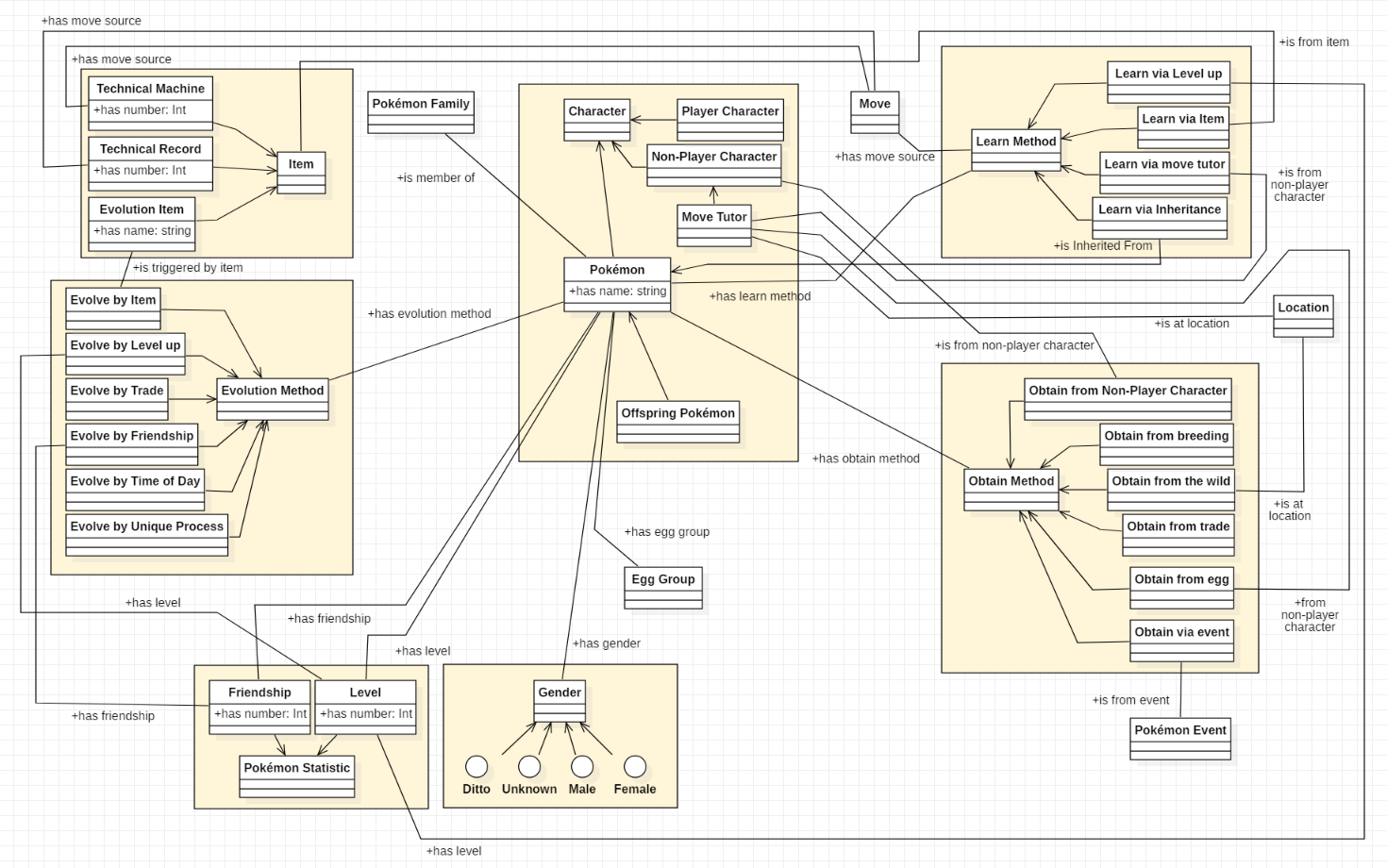
Overview of the Pokémon Moveset Ontology. We have divided the classes into a few general groups: characters (including Pokémon), Pokémon statistics and genders, methods for evolving Pokémon, obtaining new Pokémon, and obtaining new moves, and Pokémon items. We go into more detail on these below.
Concept Map – Characters and Pokémon:
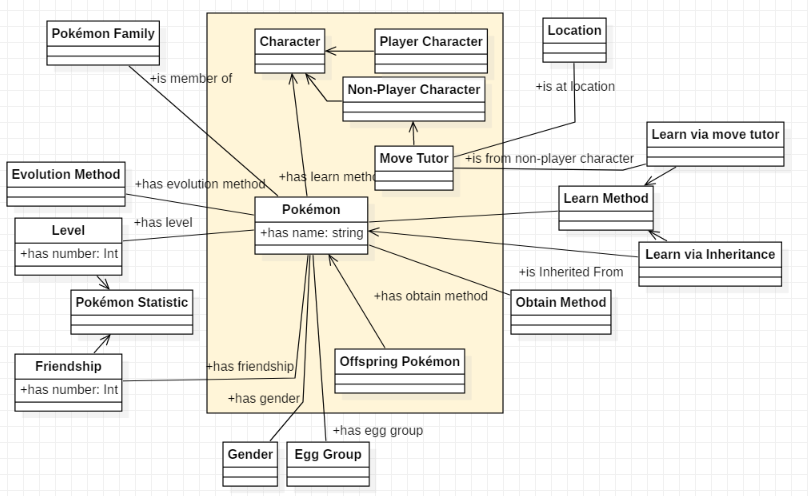
Here we have characters in the Pokémon universe–most importantly, this includes Pokémon themselves, as well as non-player characters like the Move Tutor and the player character. Pokémon have a variety of connections to other classes, including having an egg group, Pokémon family, level, friendship, and zero or more of each of the three methods. Non-player characters also have a few connections, which we go into detail on in future sections.
Concept Map – Pokémon Statistics and Genders:
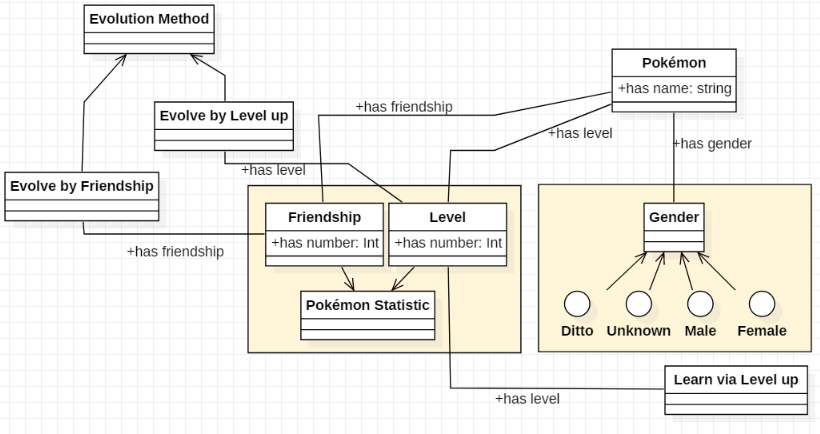
These are Pokémon-specific values. Gender determines what other Pokémon a Pokémon can breed with – male and female pokémon can breed with female and male, respectively, and unknown gender Pokémon can only breed with the shape-shifting Ditto pokémon (which has its own gender). Each pokémon also has a level, which determines how powerful a Pokémon is. Pokémon learn moves or evolve at specific levels. They additionally have a Friendship value, which determines how much a Pokémon likes the player character – Pokémon which have a high Friendship value may evolve.
Concept Map – Evolution Methods:
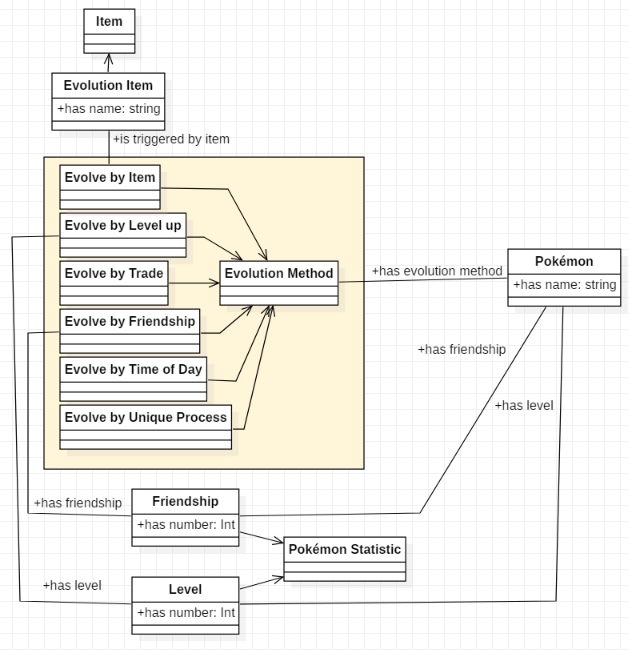 For a Pokémon, Evolution is the process a Pokémon goes through of transforming from one Pokémon species into another. As different Pokémon species can learn different moves, and more evolved forms tend to be more powerful, it is ideal for the player to trigger Evolutions. Pokémon can evolve under a variety of conditions, here termed Evolution Methods. These are: evolve by item, in which a Pokémon is given an Evolution Item to hold, Evolve by Level-Up, in which a Pokémon reaches a certain Level and evolves, Evolve by Trade, in which a Pokémon is traded to another Player and evolves, Evolve by Friendship, in which a Pokémon evolves after reaching the maximum Friendship value, Evolve by Time of Day, in which a Pokémon evolves by level-up during night or day, and Evolve by Unique Process, which is specific to each Pokémon which has this method.
For a Pokémon, Evolution is the process a Pokémon goes through of transforming from one Pokémon species into another. As different Pokémon species can learn different moves, and more evolved forms tend to be more powerful, it is ideal for the player to trigger Evolutions. Pokémon can evolve under a variety of conditions, here termed Evolution Methods. These are: evolve by item, in which a Pokémon is given an Evolution Item to hold, Evolve by Level-Up, in which a Pokémon reaches a certain Level and evolves, Evolve by Trade, in which a Pokémon is traded to another Player and evolves, Evolve by Friendship, in which a Pokémon evolves after reaching the maximum Friendship value, Evolve by Time of Day, in which a Pokémon evolves by level-up during night or day, and Evolve by Unique Process, which is specific to each Pokémon which has this method.
Concept Map – Obtain Methods:
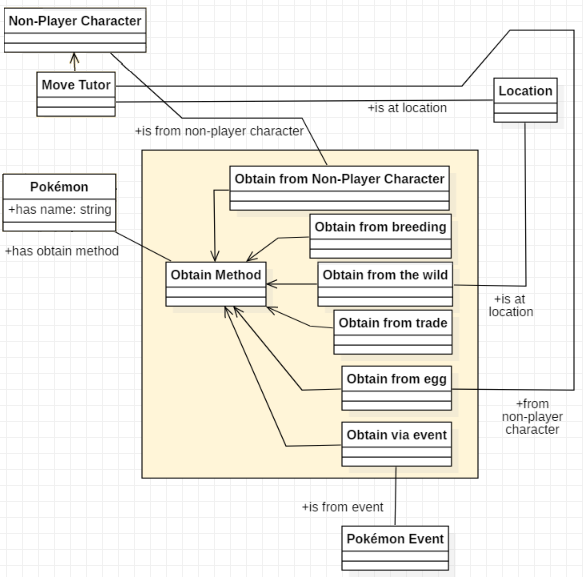 Pokémon can be obtained in a variety of ways (called here Obtain Methods). The most common is to catch a Pokémon in the wild at a specific location, but Pokémon can also be give nto the player by a non-player character, obtained by breeding a Pokemon with another Pokémon, obtained from an egg given to the player by a non-player character, or obtained from a special Pokémon Event.
Pokémon can be obtained in a variety of ways (called here Obtain Methods). The most common is to catch a Pokémon in the wild at a specific location, but Pokémon can also be give nto the player by a non-player character, obtained by breeding a Pokemon with another Pokémon, obtained from an egg given to the player by a non-player character, or obtained from a special Pokémon Event.
Concept Map – Learn Methods:
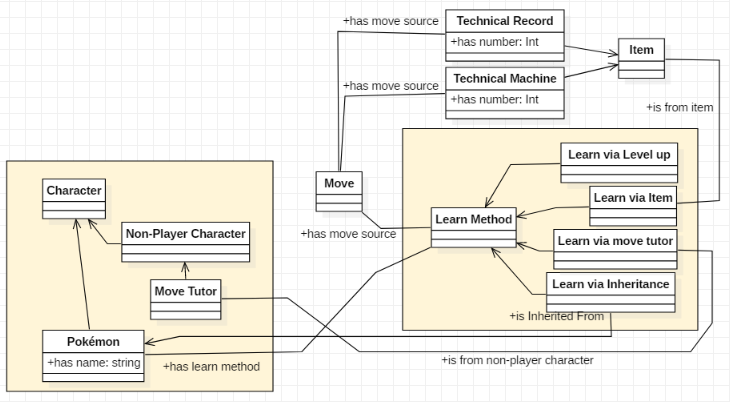 Learn Methods describe the conditions under which Pokémon learn new moves. Most commonly, Pokémon learn moves by reaching a specific Level. They may also learn moves from having a specific Item – either a Technical Machine or Techinical Record – used on them, by being taught a move by the Move Tutor character, or by inheriting a Move from another Pokémon through breeding.
Learn Methods describe the conditions under which Pokémon learn new moves. Most commonly, Pokémon learn moves by reaching a specific Level. They may also learn moves from having a specific Item – either a Technical Machine or Techinical Record – used on them, by being taught a move by the Move Tutor character, or by inheriting a Move from another Pokémon through breeding.
| Ontology | Individuals |
|---|---|
| Latest | Latest |
| OE 12 | OE 12 |
| OE 11 | OE 11 |
| OE 10 | OE 10 |
| OE 9 | OE 9 |
| OE 8 | OE 8 |
| OE 7 |